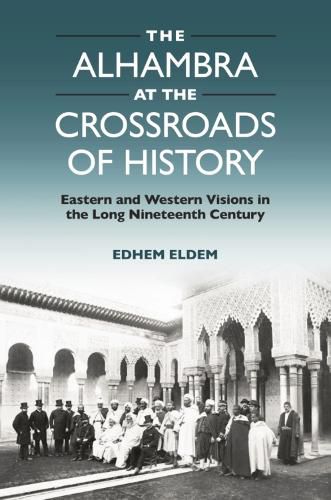Readings Newsletter
Become a Readings Member to make your shopping experience even easier.
Sign in or sign up for free!
You’re not far away from qualifying for FREE standard shipping within Australia
You’ve qualified for FREE standard shipping within Australia
The cart is loading…






A growing flow of visitors in the 19th century turned the Alhambra into a touristic destination and a major trope of Orientalism, created by Western authors and artists from Francois-Rene de Chateaubriand to Owen Jones and from Washington Irving to Jean-Leon Germe. Yet behind this Western infatuation lie scores of 'Oriental' observers of the monument, as revealed by its visitors' book, kept since 1829. This book uses this untapped source to analyse the perceptions of the Alhambra by multiple actors, including Westerners, Spaniards, Maghrebines, Ottoman Turks, Christian Arabs and Muslim Arabs from the Mashreq. In doing so, it reveals the existence of significant variations in both Western and Oriental perceptions of the monument, from 'Oriental Orientalism' to Arab nationalism. Examining the contemporary press, memoirs, travelogues and photographs as well as the visitors' book it uses the Alhambra to build a history of the complex and entangled relations between East and West, North and South, Islam and Christianity, centre and periphery during the heyday of Orientalism and Western hegemony.
$9.00 standard shipping within Australia
FREE standard shipping within Australia for orders over $100.00
Express & International shipping calculated at checkout
A growing flow of visitors in the 19th century turned the Alhambra into a touristic destination and a major trope of Orientalism, created by Western authors and artists from Francois-Rene de Chateaubriand to Owen Jones and from Washington Irving to Jean-Leon Germe. Yet behind this Western infatuation lie scores of 'Oriental' observers of the monument, as revealed by its visitors' book, kept since 1829. This book uses this untapped source to analyse the perceptions of the Alhambra by multiple actors, including Westerners, Spaniards, Maghrebines, Ottoman Turks, Christian Arabs and Muslim Arabs from the Mashreq. In doing so, it reveals the existence of significant variations in both Western and Oriental perceptions of the monument, from 'Oriental Orientalism' to Arab nationalism. Examining the contemporary press, memoirs, travelogues and photographs as well as the visitors' book it uses the Alhambra to build a history of the complex and entangled relations between East and West, North and South, Islam and Christianity, centre and periphery during the heyday of Orientalism and Western hegemony.